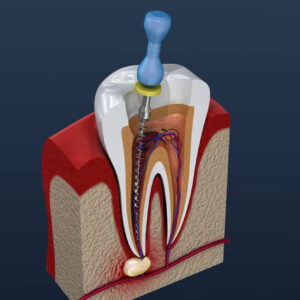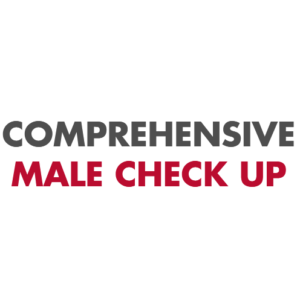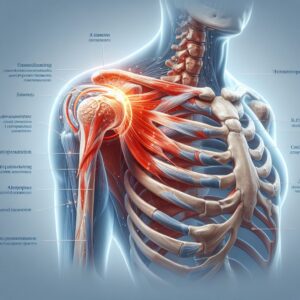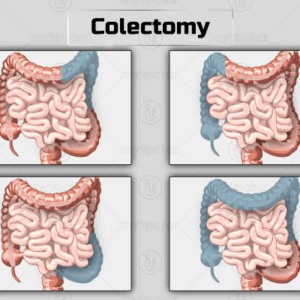Description
Familiarity with treatment
Intense Pulsed Light (IPL) therapy, also known as photofacial, is a non-invasive cosmetic skin treatment that aims to improve the color and texture of the skin without surgery. It utilizes high-intensity pulses of visible light to target specific colors in the skin and treat various skin concerns. Here is a summary of IPL therapy based on the search results:
IPL therapy can address a range of skin issues, including vascular lesions (such as spider telangiectasis, port wine stains, broken facial veins, rosacea), pigmented lesions (freckles, age marks), facial lines and wrinkles, unwanted dark hair, mild to moderate acne, and stretch marks.
The treatment works by delivering multiple wavelengths of light to the skin using a handheld device. The light energy is absorbed by specific targets in the skin, such as pigmented cells or hair follicles. This absorbed light converts to heat, which breaks down the targeted cells. The body’s natural processes then eliminate the damaged tissue.
IPL therapy is considered a non-ablative resurfacing technique, meaning it targets the lower layers of the skin (dermis) without affecting the top layers (epidermis). This approach allows for skin rejuvenation with less downtime and fewer side effects compared to ablative resurfacing methods.
The specific conditions that can be treated with IPL therapy include vascular and pigmented disorders, sun damage, hormonal changes, genetic vascular conditions, and unwanted hair. It may also improve the appearance of scars and spider veins.
IPL therapy differs from laser therapy in that it delivers multiple wavelengths of light, while lasers emit a single wavelength. IPL can treat a larger area of skin in a shorter time but may not provide as dramatic results as ablative laser resurfacing.
IPL therapy is generally considered safe and effective for most people, but there are certain factors to consider, such as skin type, medical history, and the expertise of the healthcare professional performing the treatment.
Who is it suitable for?
Intense Pulsed Light (IPL) therapy is suitable for individuals who have specific skin concerns and want to improve the appearance of their skin. Based on the search results, IPL therapy can be used to address various skin conditions, including:
Vascular Lesions: IPL therapy can treat vascular lesions such as spider telangiectasis, port wine stains, broken facial veins, rosy cheeks, rosacea, and red thread veins of the legs.
Pigmented Lesions: IPL therapy can help reduce the appearance of pigmented lesions like freckles, age marks, and melasma.
Facial Lines and Wrinkles: IPL therapy may improve the appearance of facial lines and wrinkles, contributing to a more youthful look.
Unwanted Dark Hair: IPL therapy can be used for hair removal, targeting unwanted dark hair on various areas of the body.
Mild to Moderate Acne: IPL therapy may be helpful in treating mild to moderate acne.
Stretch Marks: IPL therapy may also have a positive impact on the appearance of stretch marks.
Who is it not suitable for?
Based on the search results, there are certain factors that may make Intense Pulsed Light (IPL) therapy not suitable for everyone. These factors include:
Skin Color and Type: IPL therapy may not be suitable for individuals with darker skin tones, as it can potentially cause pigmentation changes or uneven skin tone. The effectiveness and safety of IPL therapy may vary depending on the individual’s skin color and type.
Medical Conditions and Medications: Certain medical conditions or medications may make IPL therapy unsuitable or require special precautions. For example, individuals with active skin infections, open wounds, or a history of skin cancer may not be suitable candidates for IPL therapy. Additionally, some medications, such as photosensitizing drugs, may increase the risk of adverse reactions to IPL treatment.
Pregnancy and Breastfeeding: The safety of IPL therapy during pregnancy and breastfeeding has not been extensively studied. It is generally recommended to avoid IPL therapy during these periods as a precautionary measure.
Recent Sun Exposure or Tanning: It is generally advised to avoid excessive sun exposure and tanning before IPL therapy. Sunburned or tanned skin may be more susceptible to adverse reactions or complications from the treatment.
Pre-existing Skin Conditions: Individuals with certain pre-existing skin conditions, such as active acne breakouts, eczema, or psoriasis, may need to avoid IPL therapy or have their treatment modified to avoid exacerbating these conditions.
Individual Sensitivity and Allergies: Some individuals may have heightened sensitivity or allergies to the light energy used in IPL therapy. It is important to discuss any known sensitivities or allergies with a healthcare professional before undergoing IPL treatment.
Advantages
Intense Pulsed Light (IPL) therapy offers several advantages for individuals seeking cosmetic skin treatments. Here are some advantages of IPL therapy based on the search results:
Non-Invasive and Non-Ablative: IPL therapy is a non-invasive and non-ablative treatment, meaning it does not require surgery or the removal of skin layers. It targets the lower layers of the skin (dermis) without affecting the top layers (epidermis), resulting in less downtime and fewer side effects compared to ablative resurfacing methods.
Versatility: IPL therapy can address a range of skin concerns simultaneously. It can target various skin conditions, including vascular lesions (such as spider telangiectasis, port wine stains, broken facial veins, rosacea), pigmented lesions (freckles, age marks), facial lines and wrinkles, unwanted dark hair, mild to moderate acne, and stretch marks.
Improved Skin Tone and Texture: IPL therapy can help improve the appearance of the skin by promoting a more even skin tone and texture. It can reduce the appearance of redness, brown spots, freckles, and age spots, resulting in a clearer and more youthful look.
Minimal Discomfort and Downtime: IPL therapy is generally well-tolerated, with minimal discomfort during the procedure. Most individuals can resume their normal activities immediately after treatment, as there is typically little to no downtime associated with IPL therapy.
Quick Treatment Sessions: IPL therapy can treat larger areas of the skin in a shorter time compared to some other treatments. The handheld device used in IPL therapy allows for efficient and precise treatment, making it a convenient option for individuals with busy schedules.
Safe and Effective: IPL therapy has been shown to be safe and effective for various skin concerns when performed by a qualified healthcare professional. It has undergone significant innovation and improvement over the years, making it a widely used and accessible treatment option.
Complications
While Intense Pulsed Light (IPL) therapy can be a beneficial treatment for many individuals, there are potential complications and considerations to be aware of. Here are some points based on the search results:
Skin Sensitivity and Pigmentation Changes: IPL therapy may cause temporary skin sensitivity, redness, or swelling immediately after treatment. In some cases, there may be temporary darkening or lightening of the treated skin areas. These pigmentation changes are usually temporary but can persist in rare cases, particularly in individuals with darker skin tones.
Risk of Burns or Blisters: In rare instances, IPL therapy can cause burns or blisters. This risk is higher if the treatment is performed by an inexperienced or unqualified provider or if the treatment parameters are not properly adjusted for an individual’s skin type and condition.
Eye Protection: IPL therapy should not be performed near the eyes without appropriate eye protection. The intense light emitted during treatment can be harmful to the eyes and may cause damage if proper precautions are not taken.
Not Suitable for Everyone: IPL therapy may not be suitable for individuals with certain medical conditions, such as active skin infections, open wounds, or a history of skin cancer. It is important to discuss your medical history and any underlying conditions with a healthcare professional before undergoing IPL treatment.
Multiple Treatment Sessions: Achieving optimal results with IPL therapy often requires multiple treatment sessions spaced several weeks apart. It’s important to have realistic expectations and be prepared for the time commitment involved in the treatment process.
Expertise of the Provider: The effectiveness and safety of IPL therapy greatly depend on the expertise and experience of the healthcare professional performing the treatment. It is crucial to seek treatment from a qualified and experienced provider who can assess your individual needs and customize the treatment accordingly.
Previous care
Based on the search results, here are some points regarding the previous care of Intense Pulsed Light (IPL) therapy:
Pre-Treatment Skincare Protocol: In some cases, patients may need to undergo a pre-treatment skincare protocol before receiving IPL therapy. This protocol may involve the use of skincare products such as hydroquinone and Retin-A for a period of 4-8 weeks prior to the IPL treatment. This pre-treatment skincare protocol aims to strengthen the skin, reduce melanocyte activity, and minimize the risk of post-inflammatory hyperpigmentation (PIH) 1.
Multiple Treatment Sessions: Achieving optimal results with IPL therapy often requires multiple treatment sessions. The number of sessions needed can vary depending on the individual’s specific skin concerns and desired outcomes. Typically, treatment sessions are spaced several weeks apart to allow for proper healing and skin rejuvenation.
Interprofessional Team Involvement: The delivery of IPL treatment and the longitudinal care of IPL patients may involve an interprofessional team. This team can include healthcare professionals such as dermatologists, plastic surgeons, and aestheticians who work together to ensure the best possible outcomes for patients undergoing IPL therapy 2.
Patient Education and Consultation: Prior to undergoing IPL therapy, patients should receive proper education and consultation. This includes discussing the treatment process, expected outcomes, potential risks and complications, and post-treatment care instructions. It is important for patients to have a clear understanding of the procedure and to ask any questions they may have.
Aftercare
Aftercare following Intense Pulsed Light (IPL) therapy typically involves the following considerations, as mentioned in the search results:
Sun Protection: It is crucial to protect the treated skin from sun exposure after IPL therapy. This includes wearing broad-spectrum sunscreen with a high SPF, using protective clothing, and avoiding direct sunlight during peak hours. Sun protection helps prevent potential complications and allows the skin to heal properly.
Avoiding Irritants: It is advisable to avoid using harsh skincare products, such as exfoliants or retinoids, immediately after IPL therapy. These products can potentially irritate the treated skin. It’s best to follow the specific post-treatment instructions provided by your healthcare professional regarding skincare products and routines.
Cool Compresses: Applying cool compresses to the treated area can help alleviate any temporary discomfort, redness, or swelling that may occur after IPL therapy. However, it’s important to use gentle and clean compresses to avoid introducing any potential irritants to the skin.
Moisturization: Keeping the treated skin well-moisturized can help promote healing and minimize dryness or flakiness. Use a gentle, non-irritating moisturizer recommended by your healthcare professional.
Avoiding Heat Exposure: It is generally recommended to avoid activities that may cause excessive heat exposure to the treated area, such as hot showers, saunas, or intense physical exercise, for a few days after IPL therapy. Heat can potentially exacerbate any temporary skin reactions.
Follow-Up Appointments: Depending on your specific treatment plan, you may need to schedule follow-up appointments with your healthcare professional to monitor your progress and determine if additional IPL sessions are necessary.







Reviews
There are no reviews yet.